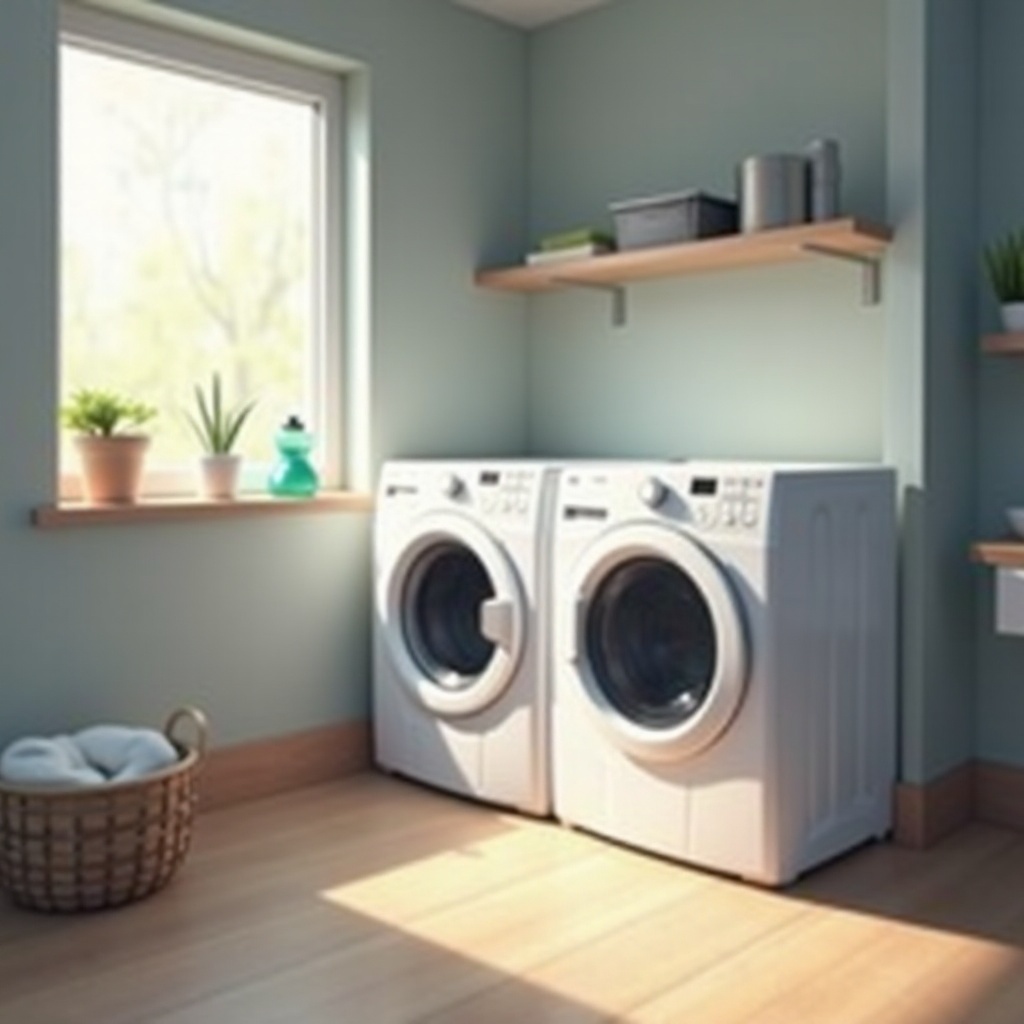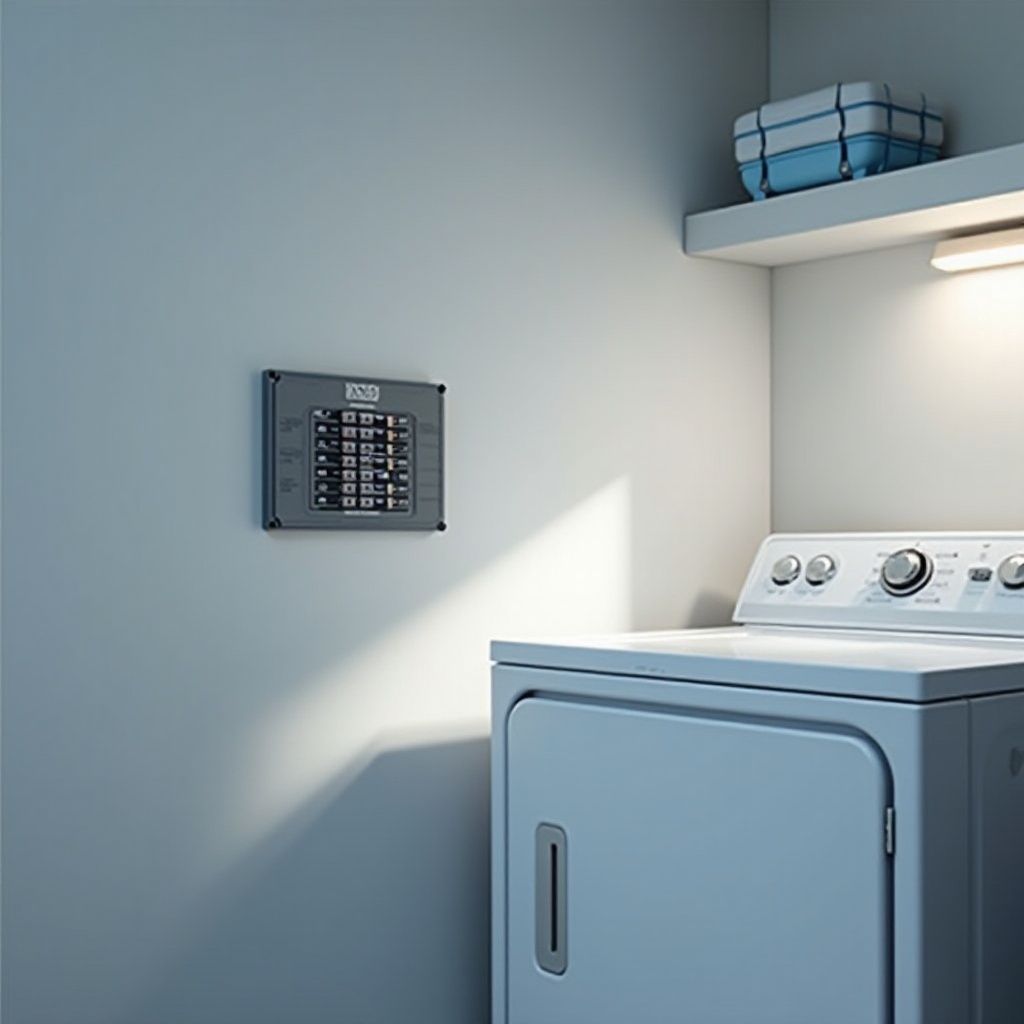Introduction
Dealing with a dryer that suddenly shuts off can disrupt your laundry routine and create frustration. It's essential to understand why this happens to resolve the issue and restore your appliance's functionality. By identifying potential causes like overheating, faulty door switches, ventilation clogs, and electrical issues, you can address these problems effectively. This guide provides clear instructions for diagnosing and solving dryer shutdowns, helping you maintain a smoothly running appliance.

Common Causes for Dryer Shutdown
Understanding the reasons behind your dryer's behavior is the first step toward fixing it. Several factors can lead to a dryer shutting off unexpectedly:
- Overheating Issues: Dryers have safety features that shut them off when overheating occurs to prevent potential fires. Obstructions or a malfunctioning thermostat can trigger this safety measure.
- Faulty Dryer Door Switch: A malfunctioning door switch may cause the dryer to stop as it mistakenly detects the door as open, interrupting the drying cycle.
- Ventilation Problems: Blocked or lint-filled exhaust vents can hinder airflow, causing the dryer to overheat and automatically shut down.
- Electrical Circuit Concerns: Issues with the home's electrical system, including tripped circuit breakers, can disrupt the dryer's power flow.
Recognizing these causes sets the stage for efficiently diagnosing the specific issue with your appliance.
Diagnosing the Problem
Once you grasp the common causes, diagnosing the specific problem becomes simpler. Look for these symptoms to identify the exact issue:
- Symptoms of Overheating: Notice if the dryer feels excessively hot or if clothes come out scorching. This indicates overheating.
- Signs of Ventilation Blockage: Reduced airflow or extended drying times can suggest blockages in the vent system.
- Indicators of Electrical Issues: Instances of the dryer stopping abruptly or house lights flickering during use point to electrical problems.
Identifying these symptoms will direct you toward the right solution for your appliance.

How to Fix Overheating in Your Dryer
Addressing overheating is crucial for restoring dryer functionality. Follow these steps to tackle the issue:
- Checking the Thermostat: Ensure the thermostat works correctly by testing for continuity with a multimeter. Replace it if it's malfunctioning.
- Cleaning the Lint Filter: Regularly clean the lint filter to ensure proper airflow. This simple maintenance step can prevent many overheating issues.
Fixing overheating sets a foundation for improving your dryer's efficiency.
Repairing a Faulty Dryer Door Switch
A faulty door switch can cause the dryer to halt unexpectedly. Here's how you can resolve this:
- Inspecting the Door Switch: Open the dryer door and confirm the switch's operation by listening for the characteristic click when closing the door.
- Replacing a Defective Switch: If there's no click or visible damage exists, replace the switch. Unplug the dryer, remove the old switch, and install a new one according to the manufacturer's instructions.
Repairing the door switch ensures the dryer completes its cycle efficiently.
Resolving Ventilation Problems
Ventilation issues are common but often easily fixable. To resolve these problems, follow these steps:
- Inspecting the Exhaust Vent: Disconnect the vent and check for obstructions such as lint build-up or kinks.
- Steps to Clear Any Blockages: Use a vent brush or vacuum attachment to clear debris. Ensure the vent system is straight and free from kinks to promote optimal airflow.
Improving ventilation significantly enhances your dryer’s performance and prevents overheating.
Addressing Circuit Breaker and Electrical Concerns
Electrical issues can severely affect dryer operations. Stabilize the power supply with these steps:
- Verifying Power Sources: Examine the power outlet and cord for signs of damage. Ensure the plug is secure and functioning properly.
- Professional Electrical Evaluation: If electrical issues persist, contact a professional electrician to evaluate the circuit breaker and internal wiring for faults.
Ensuring a stable power source reduces unexpected shutdowns and optimizes dryer efficiency.

Preventive Maintenance Tips
Prevention is key to avoiding future dryer problems. Implement these tips to extend your appliance's lifespan:
- Regular Cleaning Practices: Clean the lint filter after every cycle. Periodically clean the entire vent system to prevent clogs and airflow restrictions.
- Consistent Performance Checks: Regularly inspect key components such as switches and thermostats for wear and tear that could impact performance.
By maintaining these preventive steps, keep your dryer running smoothly and extend its operational life.
Conclusion
Your dryer plays a pivotal role in maintaining household efficiency, and unexpected shutdowns can disrupt routine tasks. Understanding potential causes and applying targeted solutions help resolve the frequent issue of dryer shutdowns. With a focus on regular maintenance and attention to detail, you can preserve your dryer’s functionality, ensuring it serves you well for years to come.
Frequently Asked Questions
Why does my dryer shut off after 5 minutes?
Your dryer may shut off quickly due to overheating or a faulty thermal fuse. Check for obstructions in the vent and ensure the dryer is not overloaded.
Can a blocked vent cause my dryer to shut off?
Yes, a blocked vent can restrict airflow, causing the dryer to overheat and shut off as a safety measure. Regularly clean the vent to maintain proper airflow.
When should I call a professional for my dryer problems?
Call a professional if you notice persistent electrical issues, unusual noises, or if you cannot resolve the problem with basic troubleshooting.
